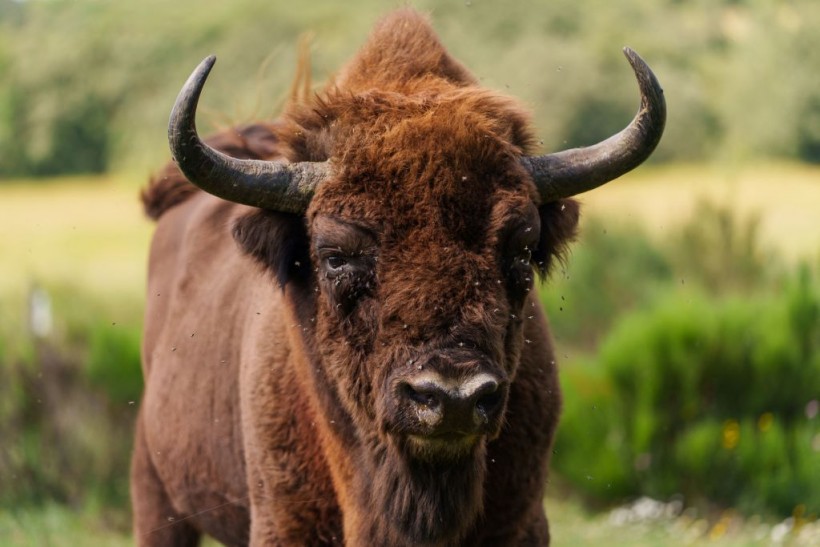The Rocky Mountain Arsenal National Wildlife Refuge is home to a growing herd of 250 bison, which were reintroduced in 2006 to help restore the native short-grass prairie.
However, the bison are facing a new challenge: urban growth.
Development alters water flows and erodes floodplain
 (Photo : CESAR MANSO/AFP via Getty Images)
(Photo : CESAR MANSO/AFP via Getty Images)

The refuge, located near Denver and Aurora, is surrounded by rapidly developing areas, such as the Denver International Airport, the Gaylord Rockies Resort and Convention Center, and various housing and commercial projects.
These developments have changed the water flows of First Creek, which runs through the refuge and provides a natural corridor for the bison to cross from one half of the refuge to the other.
According to biologist Sarah Metzer, the refuge's supervisory ranger, the increased runoff from the urban areas had created a deep gully in the floodplain, making it difficult for the bison to access the northern part of the refuge.
Metzer explained that this was a human-created challenge resulting from all the development.
She added that bison were nimble animals, but they would have a hard time moving across the creek and getting up the other side.
The loss of access to the northern grazing land had negative consequences for both the bison and the prairie ecosystem.
Metzer said that the bison would not graze on the land across First Creek because they would have to go all the way around, pointing out that the land would not get grazed and all the ecological benefits of having bison there would be lost.
The erosion of the floodplain also affected the water quality and quantity of First Creek, which was a tributary of the South Platte River.
The increased sedimentation and pollution from the runoff could harm the aquatic life and the riparian vegetation along the creek.
Moreover, the reduced water storage capacity of the floodplain could increase the risk of flooding downstream.
Also Read: Bison's Woolly Coat Linked to a Gene That Regulates Coat Color and Length
Refuge plans to restore floodplain and protect bison habitat
The federal wildlife biologists managing the refuge had a plan to reconstruct the floodplain starting in January, with estimated costs ranging from $40 million to $61 million.
The plan involved re-contouring the land and creating a curving creek, extending the length from 5.3 miles to 7.7 miles.
The new floodplain would be able to carry more water toward the South Platte River and prevent further erosion.
Refuge manager David Lucas said that the project was necessary to ensure the survival of the bison herd and the restoration of the prairie.
He stated that it had to be "restoration on steroids." He emphasized that they had to be ready to withstand additional pressures that would come with continued growth around the refuge and a warming climate.
The refuge, which was once a toxic wasteland where the U.S. Army produced chemical weapons and the Shell Oil Co. produced the pesticide DDT, had been transformed into a wildlife sanctuary that attracted more than 950,000 visitors a year.
The bison, some of which weighed more than a ton, were the main attraction for many people.
However, the refuge's mission was not only to provide recreation but also to conserve and restore the native prairie habitat for the benefit of wildlife and future generations.
Related article: Endangered Bison Spotted In Thailand For The First Time In 37 Years
© 2024 NatureWorldNews.com All rights reserved. Do not reproduce without permission.

![Tsunami Hazard Zones: New US Map Shows Places at Risk of Flooding and Tsunamis Amid Rising Sea Levels [NOAA]](https://1471793142.rsc.cdn77.org/data/thumbs/full/70325/280/157/50/40/tsunami-hazard-zones-new-us-map-shows-places-at-risk-of-flooding-and-tsunamis-amid-rising-sea-levels-noaa.jpg)



